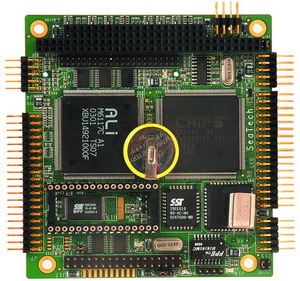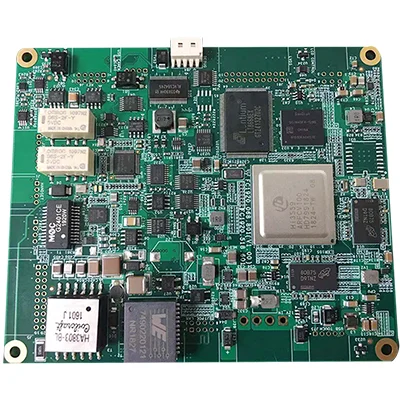Aviation Components Control Board
Name: Aviation Components Control Board
Number of SMT lines: 7 high-speed SMT patch supporting production lines
SMT daily production capacity: more than 30 million points
Testing Equipment: X-RAY Tester, First Piece Tester, AOI Automatic Optical Tester, ICT Tester, BGA Rework Station
Placement speed: CHIP component placement speed (at best conditions) 0.036 S/piece
The smallest package that can be attached: 0201, the accuracy can reach ±0.04mm
Minimum device accuracy: PLCC, QFP, BGA, CSP and other devices can be mounted, and the pin spacing can reach ±0.04mm
IC type patch accuracy: it has a high level for mounting ultra-thin PCB boards, flexible PCB boards, gold fingers, etc. Can be mounted/inserted/mixed TFT display driver board, mobile phone motherboard, battery protection circuit and other difficult products
Control panel components
The aerospace industry requires printed circuit boards (PCBs) that are stronger than those required for most conventional electronic devices. For example, components used in many control towers, aircraft, satellites and space shuttles must be extremely reliable when dealing with elevated temperatures and pressures.
If these components fail, the consequences can be devastating for people and cargo on board.
As a result, manufacturers of printed circuit boards used in the aerospace industry will need to go beyond the call of duty to ensure that their PCBs are very durable and reliable. Fortunately, the PCB aerospace sector has come a long way because the boards manufactured today are more efficient and safer than those of the past.
High temperature
Unbeknownst to some, under certain conditions, the temperature in space can drop to -150 degrees Celsius or even higher. As a result, electronics sent into space must be durable enough to withstand high and low temperatures.
It should also be noted that due to the vacuum of this environment, heat cannot be transferred through the space through the air. Therefore, heat can only be transferred by radiation in space. Fortunately, aerospace PCB manufacturers will only use aluminum, copper and laminate substrates that are very specialized and have high temperature properties.
Additionally, most aerospace PCBs will be further insulated with thermal compounds to isolate the heat, ensuring that heat does not transfer to other electronic components. Also, some components are located about a tenth of an inch from the surface of the plank.
In some cases, space can be utilized to facilitate thermal distribution of heat. For aviation, a fan can be used to remove excess heat. Oxidation is also a problem due to overheating, so anodized aluminum can be used to address heat-related oxidation.
Need shock absorption
Mechanical abuse is also a concern, as aerospace equipment and components will be subject to vibration and excessive shock. As a result, some PCBs may need to be modified to withstand such harsh conditions.
For example, instead of traditional soldering methods, the pins can be held in place by pressing them into the PCB.
Alternatively, engineers can choose to use both solder and pins as an extra measure of safety. Additionally, engineers can add thermally conductive glue to the board to reduce the effect of fluctuations on components.
Another strategy to help PCBs handle extremely high and low temperatures, vibration, and shock is to leave tiny gaps between the surface of the board and the components. In this way, the stress on the PCB can be reduced.
Emissivity
Radiation is another factor that space equipment must be able to deal with, as radiation levels in space are higher than those on Earth. Therefore, these boards need to be configured to withstand high radiation levels that could damage space equipment.
To do this, engineers can use certain special components or materials to shield the associated electronics from radiation. Components will also be made smaller than normal, leaving fewer components vulnerable to the harmful effects of radiation.
Additionally, backups can be made so that the entire operation is not compromised in the event of a radiation disaster. Antifuse technology is another boon for the aerospace industry, as it can be used to create routes that conduct current between transistors permanently.
Antifuse technology has also been shown to be more resistant to the harmful effects of radiation than other older methods. In some cases, thinner layers of material can be used to create more radiation tough circuits.
RF Conundrum
In the aviation industry, radio waves will also be required for communication, so the transmission of the signal must not degrade the quality of the signal. To achieve this, engineers can add antennas to the antenna or place shields in certain areas of the board.
Kingford can provide the production service of aviation component control board, professional one-stop PCBA service, welcome to inquire

Name: Aviation Components Control Board
Number of SMT lines: 7 high-speed SMT patch supporting production lines
SMT daily production capacity: more than 30 million points
Testing Equipment: X-RAY Tester, First Piece Tester, AOI Automatic Optical Tester, ICT Tester, BGA Rework Station
Placement speed: CHIP component placement speed (at best conditions) 0.036 S/piece
The smallest package that can be attached: 0201, the accuracy can reach ±0.04mm
Minimum device accuracy: PLCC, QFP, BGA, CSP and other devices can be mounted, and the pin spacing can reach ±0.04mm
IC type patch accuracy: it has a high level for mounting ultra-thin PCB boards, flexible PCB boards, gold fingers, etc. Can be mounted/inserted/mixed TFT display driver board, mobile phone motherboard, battery protection circuit and other difficult products



